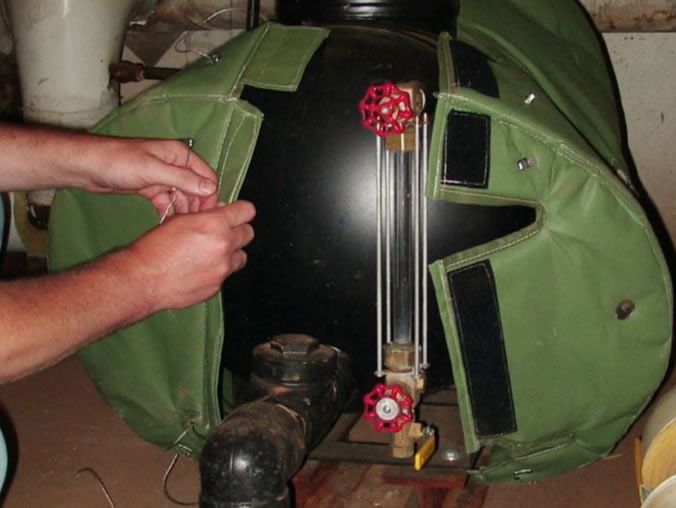Since the late 1970s when removable, reusable blanket insulation entered the commercial and industrial market, there’s been a positive impact for facility and sustainability managers who’ve chosen this solution. The concept of removing insulation and re-installing the same insulation material made sense then and makes sense today. The convenience of easily accessing insulated components and re-installing the insulations to keep saving energy also makes sense.
Early blanket systems were at times difficult to apply in both design and construction; however, the minor difficulties were far outweighed by the ability to gain instant access for inspection, service or repair and then re-install the material. It was a common-sense approach that overcame many challenges then and now; and the technology gradually improved to its current state.
Material cost on blanket is higher but the economic advantage comes into play once the material is removed and re-installed. You pay more for the blanket, but the labor savings has an enormous impact. Gaining instant access is an enormous benefit, too.
So, looking at cost averaging, if the blanket costs $300.00 and the installation labor costs $50.00, your initial investment of $350.00 is then factored into a 15-year lifespan. Removing the blanket once a year for 15 years ($50.00 x 15) and reinstalling it ($50.00 x 15), yields a labor cost of $1,500.00, over the life of the investment. We assume that we will reuse the blanket for years. Now consider an average annual energy savings of $200.00 for the component the blanket covers, or ($200.00 x 15) $3,000.00 for its lifespan. The net impact is $3,000.00 (energy savings) minus $1,800.00 (i.e., labor & material) or a positive financial impact of $1,200.00.
What if you covered that same component with conventional materials—in other words a blanket that’s removable, but not reusable—and had to remove it for service once a year? Material cost would be about $150.00 per year. To remove the material, we could apply one manhour, or $50.00. Labor would be two manhours, or $100.00, for each time you installed the new material. After 15 years of removal and re-installation, we would apply ($100.00 x 15 and $50.00 x 15), or $2,250.00 for labor. But the material cost would be ($150.00 x 15), or $2,250.00. The net result would be $4,500.00. Assume energy savings of $3,000 over 15 years. And the owner would have a cumulative loss of ($3,000.00 – $4,500.00), or $1,500.00 for 15 years. This assumes that the owner of the system is vigilant and reinsulates every year.
The difference here is the cost benefit of saving $1,200.00 or losing $1,500.00 with the same investment. Keep in mind, a typical system will have between 150 and 1,500 fittings or components.
Blanket designs and blanket systems have radically changed since the early 1980s. With a variety of blanket specification standards for applications, comprehensive CAD libraries of blanket designs, easy-to-use integral fasteners, and blanket systems that accommodate temperature and conditions, it’s no wonder the industry standard now is a self-contained, reusable-removable insulation blanket. Easy-on and easy-off features, blanket systems designed correctly (via AutoCAD) and manufactured to high standards (via CNC Technology). The options for saving energy and insulating are limitless.
The economics of these solutions are one aspect, but safety, noise-reduction, and labor-saving designs are also major reasons to choose blanket insulation over conventional insulation materials. Why not consider a proven technology and why not garner the many advantages that blanket insulation has to offer?

